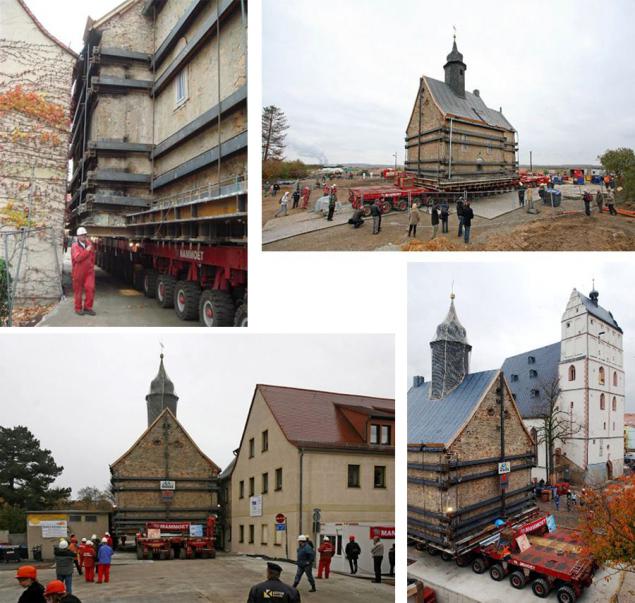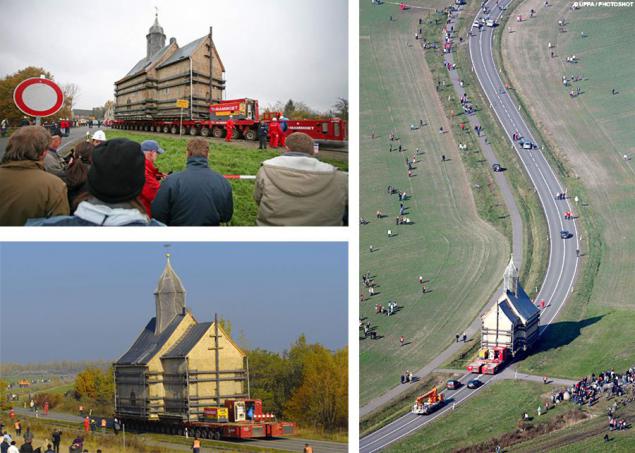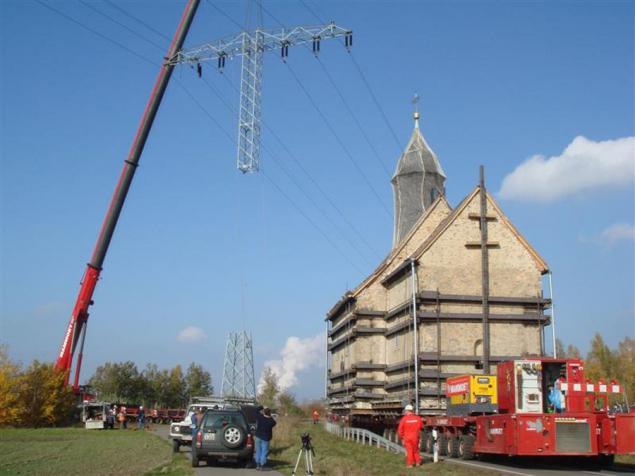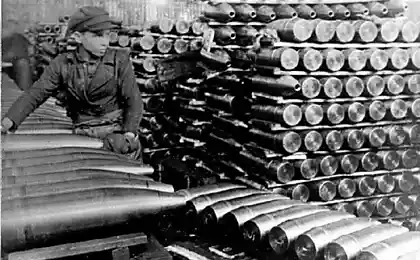1033
The oldest of all the Saxon churches in the south-east of Germany
So, the most ancient of all the Saxon churches in the south-east of Germany, built in 1258, stood for more than 750 years in one place, because
force majeure was moved from the village Hoyersdorf in Bourne. It is unlikely that city planners foresaw the time such global changes in rustic landscape and so, as always transport was connected with a bunch of problems and costs.

Citadel thirteenth century has the following parameters: weight 833 tons, length 14500 mm, height of 19600 mm. The reason it is extremely unusual voyage - a church found deposits of brown coal, and in our nanovek without lignite nowhere. By the way, along with Kirch moved as 59 villagers.

Residents did not oppose the move, but set a condition of MIBRAG, which won a court in coal mining in this place. The Church does not endure, and carry with them. And so, for the sake of coal in Germany can easily carry the church and move people. Residents clearly not lucky enough to live in this brown gold, because according to the company is one of the richest oil fields in the former GDR (52 million tons). Transportation, by the way, cost 4.200.000 euros.

For the beginning of the Lutheran church endured everything of value, cemented cracks sealed its walls and roof in a steel corset for stability, undermine and began to raise on hydraulic jacks. When the church lifted 1200 mm, it began to speed self-propelled unit, or rather two modules Scheuerle, each of which consisted of 20 axes, fastened in length. Load capacity of each "line" - 40 tons. Photo you can guess that the width of the church - about 10 meters.

The road itself is 12 kilometers long was run for 6 days. The main objective was to prevent tilting of the church for more than 2 degrees. Transportation speed did not exceed 2 kilometers per hour. Of course this event was attended by many of the public along the way, which really surprised appearance of such goods on a public road. But surprise unusual transportation, residents noticed completely re-planned road network.

Of course, on the way there were many obstacles. The route has been designed with minimal cost, but still were dismantled and two high-voltage line crossings. Another two w / d to move through the time to go around the dam. Dam, by the way, was also tricky: it was not an important feature to load undermine it. And in the end, both actually and in the beginning, the church waiting for the narrow cobbled streets of the ancient city of stone blocks. Mostly clearances were no more than 1-2 inches between the houses and the load.

At the end of the church whole and unharmed, thanks to the heavenly forces and experience engineers, was in a new place in the village.
force majeure was moved from the village Hoyersdorf in Bourne. It is unlikely that city planners foresaw the time such global changes in rustic landscape and so, as always transport was connected with a bunch of problems and costs.

Citadel thirteenth century has the following parameters: weight 833 tons, length 14500 mm, height of 19600 mm. The reason it is extremely unusual voyage - a church found deposits of brown coal, and in our nanovek without lignite nowhere. By the way, along with Kirch moved as 59 villagers.

Residents did not oppose the move, but set a condition of MIBRAG, which won a court in coal mining in this place. The Church does not endure, and carry with them. And so, for the sake of coal in Germany can easily carry the church and move people. Residents clearly not lucky enough to live in this brown gold, because according to the company is one of the richest oil fields in the former GDR (52 million tons). Transportation, by the way, cost 4.200.000 euros.

For the beginning of the Lutheran church endured everything of value, cemented cracks sealed its walls and roof in a steel corset for stability, undermine and began to raise on hydraulic jacks. When the church lifted 1200 mm, it began to speed self-propelled unit, or rather two modules Scheuerle, each of which consisted of 20 axes, fastened in length. Load capacity of each "line" - 40 tons. Photo you can guess that the width of the church - about 10 meters.

The road itself is 12 kilometers long was run for 6 days. The main objective was to prevent tilting of the church for more than 2 degrees. Transportation speed did not exceed 2 kilometers per hour. Of course this event was attended by many of the public along the way, which really surprised appearance of such goods on a public road. But surprise unusual transportation, residents noticed completely re-planned road network.

Of course, on the way there were many obstacles. The route has been designed with minimal cost, but still were dismantled and two high-voltage line crossings. Another two w / d to move through the time to go around the dam. Dam, by the way, was also tricky: it was not an important feature to load undermine it. And in the end, both actually and in the beginning, the church waiting for the narrow cobbled streets of the ancient city of stone blocks. Mostly clearances were no more than 1-2 inches between the houses and the load.

At the end of the church whole and unharmed, thanks to the heavenly forces and experience engineers, was in a new place in the village.






















